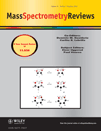
Proteomes
Scope & Guideline
Unveiling the Complexity of Proteins.
Introduction
Aims and Scopes
- Proteomic Analysis of Biological Samples:
The journal publishes studies that utilize proteomic techniques to analyze various biological samples, including tissues, fluids, and cells, to uncover insights into biological processes and disease mechanisms. - Integration of Multi-Omics Approaches:
A consistent focus on the integration of proteomics with other omics disciplines such as genomics and metabolomics, allowing for a more comprehensive understanding of biological systems and disease states. - Clinical Applications of Proteomics:
Research that translates proteomic findings into clinical applications, particularly in the identification of biomarkers for disease diagnosis, prognosis, and treatment, is a core area of interest. - Technological Advancements in Proteomics:
The journal highlights innovative methodologies and technological advancements in proteomics, including mass spectrometry, bioinformatics, and sample preparation techniques, which enhance the capabilities of proteomic studies. - Proteomics in Environmental and Agricultural Studies:
The journal also explores the application of proteomics in environmental science and agriculture, focusing on plant and microbial proteomics to address challenges in food security and sustainability.
Trending and Emerging
- Cancer Proteomics and Personalized Medicine:
A significant increase in studies focusing on cancer proteomics, particularly in relation to personalized medicine and the identification of specific biomarkers for various cancer types, shows the journal's commitment to addressing cancer-related challenges. - Integration of Proteomics with Artificial Intelligence and Machine Learning:
Emerging research that applies AI and machine learning techniques to proteomics data analysis demonstrates a growing trend towards computational approaches, enhancing data interpretation and biomarker discovery. - Proteomics in Neurodegenerative Disease Research:
An increased focus on the role of proteomics in understanding neurodegenerative diseases, including Alzheimer's and Parkinson's, highlights the journal's alignment with pressing health issues and the quest for effective therapeutic strategies. - Environmental and Ecological Proteomics:
There is an emerging interest in the application of proteomics in environmental and ecological studies, addressing issues such as climate change, plant stress responses, and microbial interactions, reflecting a broader understanding of biological impacts on ecosystems. - Post-Translational Modifications (PTMs) Research:
Research on post-translational modifications, particularly in relation to their functional implications in diseases and cellular processes, is gaining traction, indicating a trend towards understanding the complexity of protein regulation.
Declining or Waning
- Basic Proteomics Methodologies:
There has been a noticeable decrease in publications solely focused on basic proteomics methodologies without an application context, as the field has shifted towards more integrative and applied studies. - Single-Organism Proteomics Studies:
Research focusing exclusively on the proteomics of single organisms, especially non-human models, has diminished, with a greater emphasis now on comparative and integrative studies across species. - Classical Biomarker Studies:
Traditional approaches to biomarker discovery that rely heavily on single-protein analysis have waned, giving way to more complex multi-omics strategies that consider the interplay of multiple biological molecules. - Proteomics in Non-Clinical Settings:
The application of proteomics in non-clinical settings, such as basic research without direct implications for health or disease, has seen a decline as the journal moves towards a more clinically relevant narrative.
Similar Journals

Mass Spectrometry Letters
Exploring Innovative Frontiers in Analytical Chemistry.Mass Spectrometry Letters is a pioneering open-access journal published by the Korean Society for Mass Spectrometry, specializing in the diverse fields of analytical chemistry, biochemistry, and spectroscopy. Established in 2010, this journal aims to disseminate groundbreaking research and advancements in mass spectrometry and its applications across various scientific domains. Though currently categorized in the Q4 quartile in key analytical fields, Mass Spectrometry Letters serves as an essential platform for researchers, professionals, and students to share innovative methodologies, emerging trends, and practical applications of mass spectrometry, thus fostering collaboration and advancing knowledge in the scientific community. With a commitment to open access, articles published since 2010 are readily available, enabling widespread distribution and engagement within the international research community. Located in Daejeon, South Korea, and actively converging research through 2024, the journal holds the potential to grow its impact and relevance within the dynamic landscape of mass spectrometry.

MOLECULAR & CELLULAR PROTEOMICS
Advancing the frontiers of protein science.MOLECULAR & CELLULAR PROTEOMICS, published by Elsevier, stands as a premier journal in the fields of Biochemistry, Analytical Chemistry, and Molecular Biology, with a distinguished Q1 ranking reflecting its high impact and contribution to the scientific community. Established in 2002, this journal has consistently provided a platform for the latest research in protein science, merging molecular biology with advanced analytical techniques. With impressive Scopus rankings—41st in Biochemistry and 16th in Analytical Chemistry—it caters to an audience of researchers, professionals, and students eager to explore cutting-edge developments in proteomics. Although currently not designated as open access, the journal aims to foster knowledge dissemination through accessible research content. As it continues to evolve until 2024, MOLECULAR & CELLULAR PROTEOMICS is essential for anyone passionately engaged in the ever-expanding field of proteomics.

All Life
Bridging Disciplines for a Deeper Understanding of LifeAll Life is a distinguished academic journal published by TAYLOR & FRANCIS LTD, based in the United Kingdom, focusing on the interdisciplinary realms of agricultural and biological sciences, biochemistry, genetics, and neuroscience. With the ISSN 2689-5293 and E-ISSN 2689-5307, this open-access journal aims to disseminate high-quality research from 2020 to 2024, facilitating a wider reach and impact across various fields. Notably, it holds a Q3 ranking in both Agricultural and Biological Sciences, as well as Biochemistry, Genetics and Molecular Biology, and a Q4 ranking in Neuroscience, reflecting its growing presence in these disciplines. All Life aims to foster collaboration among researchers, professionals, and students, encouraging innovative approaches in understanding life sciences. By delivering timely insights and thought-provoking discussions, the journal plays a crucial role in advancing knowledge and promoting interdisciplinary dialogue in the evolving landscape of life sciences research.

Frontiers in Molecular Biosciences
Transforming Research into Understanding in Molecular SciencesFrontiers in Molecular Biosciences is an esteemed open-access journal published by FRONTIERS MEDIA SA, based in Switzerland. Since its inception in 2014, the journal has made significant strides in the fields of biochemistry, genetics, and molecular biology, cementing its reputation with a solid position in the Q1 quartile for both Biochemistry and Genetics and Molecular Biology (miscellaneous) categories as of 2023. With a remarkable Scopus rank of #14/103 in the combined categories, it offers an essential platform for the dissemination of high-quality research that shapes the understanding of molecular processes and their implications in health and disease. The journal’s commitment to open access facilitates the broadest possible reach for groundbreaking discoveries, serving as a vital resource for researchers, professionals, and students alike. Located at AVENUE DU TRIBUNAL FEDERAL 34, LAUSANNE, this journal continues to foster innovative discussions and advancements in molecular biosciences, paving the way for new insights and collaborations in the scientific community.

PROTEIN AND PEPTIDE LETTERS
Connecting researchers with the latest in molecular mechanisms.PROTEIN AND PEPTIDE LETTERS is a prominent peer-reviewed journal published by Bentham Science Publishers Ltd, specializing in the dynamic fields of biochemistry and structural biology. With an ISSN of 0929-8665 and a corresponding E-ISSN of 1875-5305, the journal has been a pivotal platform for researchers since its inception in 1994. Spanning various aspects of protein and peptide research, it aims to disseminate groundbreaking findings that enhance our understanding of molecular mechanisms and therapeutic applications. Although categorized in the Q3 quartile for biochemistry and medicine, and Q4 in structural biology within the 2023 metrics, it remains a valuable resource in the academic arena, offering insight into the latest research and advancements. As the journal converges towards its 2024 milestone, it continues to reflect the evolving landscape of molecular research. While it currently does not offer open access, the accessibility to its impactful content is essential for students, professionals, and researchers invested in these critical scientific disciplines.

Biomarker Insights
Transforming health insights through groundbreaking research.Biomarker Insights, published by SAGE Publications Ltd, is a leading open-access journal dedicated to advancing the field of biomarker research and its applications in health and disease. With an ISSN of 1177-2719 and an E-ISSN of 1177-2719, this journal has been at the forefront of disseminating high-quality scientific findings since its inception in 2006. Based in New Zealand, it has achieved a notable impact within the academic community, ranking in Q2 for Biochemistry (medical) and Molecular Medicine, and Q1 in Pharmacology as of 2023. This positions Biomarker Insights as a critical resource for researchers, professionals, and students alike, looking to explore innovative methodologies and applications in biomarker discovery and validation. With a commitment to open access, the journal ensures that groundbreaking research is readily available to the global community, fostering collaboration and innovation in the ever-evolving field of biomedical sciences.

MASS SPECTROMETRY REVIEWS
Your Gateway to Premier Research in Mass SpectrometryMASS SPECTROMETRY REVIEWS, published by Wiley, is a premier academic journal dedicated to advancing the field of mass spectrometry and its applications across a multitude of scientific disciplines. With an ISSN of 0277-7037 and an E-ISSN of 1098-2787, the journal has established itself as a vital resource within the realms of Analytical Chemistry, Biochemistry, Genetics, Condensed Matter Physics, and Spectroscopy, achieving Q1 status across these categories in 2023. As a testament to its significant contribution to scholarly research, it boasts impressive Scopus rankings, including a rank of #2 out of 76 in Chemistry - Spectroscopy and #4 out of 156 in Chemistry - Analytical Chemistry, placing it in the 97th percentile and above. Emphasizing high-quality, peer-reviewed research, MASS SPECTROMETRY REVIEWS serves as an essential platform for researchers, professionals, and students aiming to stay abreast of cutting-edge developments and methodologies in mass spectrometry. The journal is committed to fostering a deeper understanding of mass spectrometric techniques while also contributing to interdisciplinary advancements, making it a valuable addition to any academic library. Authors seeking to disseminate their work in a journal with a strong reputation and impact in the scientific community will find MASS SPECTROMETRY REVIEWS an ideal venue.

Journal of Biochemistry
Elevating the discourse in biochemistry and molecular biology.Journal of Biochemistry, published by Oxford University Press, is a prestigious academic journal that has been at the forefront of biochemical research since its inception in 1922. With an ISSN of 0021-924X and an E-ISSN of 1756-2651, this journal serves as a platform for disseminating high-quality research in the fields of biochemistry, molecular biology, and medicine, holding impressive rankings such as Q2 in Biochemistry and Medicine (miscellaneous) in 2023. As of 2024, the journal continues to explore significant topics in these areas, offering valuable insights for researchers, professionals, and students alike. The journal does not currently offer open access, but it remains a vital resource for anyone in the biochemical community seeking to stay updated on the latest discoveries and advancements. With its rich history and dedication to scientific excellence, the Journal of Biochemistry is an indispensable part of the scholarly landscape.

Journal of Integrative Bioinformatics
Pioneering Open Access to Transformative Bioinformatics KnowledgeJournal of Integrative Bioinformatics, published by WALTER DE GRUYTER GMBH, is a leading open-access journal that has been at the forefront of the field since its inception in 2004. With an E-ISSN of 1613-4516, it serves as a crucial platform for researchers engaged in the interdisciplinary study of bioinformatics, blending insights from biology, computer science, and mathematics. Based in Germany, the journal is recognized for its impact in the realm of general medicine, boasting a Scopus rank of #172 out of 636 and placing in the 73rd percentile of its category. The journal continuously strives to disseminate high-quality research contributions that unify experimental and computational approaches to address complex biomedical questions. Targeted towards academics, professionals, and students alike, the Journal of Integrative Bioinformatics provides essential access to innovative research that enhances our understanding of integrative methodologies in medicine and beyond, especially with converged years spanning from 2008 to 2024.

JOURNAL OF PROTEOME RESEARCH
Connecting Scholars through Protein Research ExcellenceJOURNAL OF PROTEOME RESEARCH is a premier publication in the field of proteomics, disseminating cutting-edge research and methodologies that drive advancements in biochemistry and molecular biology. Published by the American Chemical Society, this esteemed journal boasts a robust impact, as evidenced by its Q1 rankings in both Biochemistry and miscellaneous Chemistry categories for 2023. With a reputation bolstered by a solid Scopus ranking—#64 out of 408 in General Chemistry and #80 out of 438 in Biochemistry—the journal serves as an essential resource for researchers, professionals, and students aiming to deepen their understanding of protein functions and interactions in biological systems. Although it does not operate under an open-access model, the JOURNAL OF PROTEOME RESEARCH remains a critical platform for scholarly discourse, committed to publishing high-quality, peer-reviewed articles through 2024 and beyond. Scholars are encouraged to engage with the pioneering studies and reviews that shape the future of proteomics.